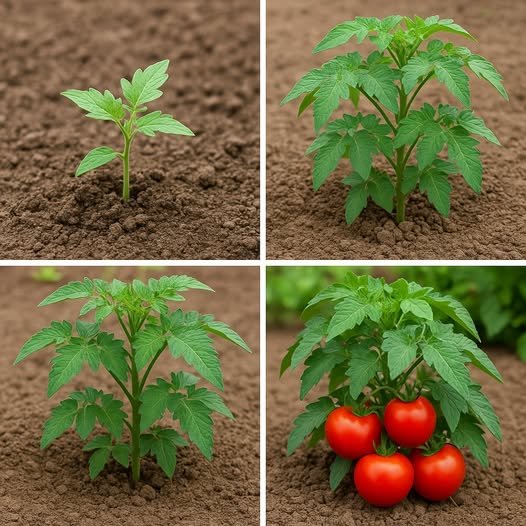The Secret to a Bountiful Tomato Harvest: Proper Leaf Removal
Growing healthy, strong, and productive tomato plants can be a challenging task, but with the right techniques, it is entirely possible to achieve amazing results. One such technique that many successful gardeners use is leaf removal. If you want your tomatoes to thrive, bear abundant fruit, and avoid common issues like poor air circulation and disease, knowing when, how, and how many leaves to remove is crucial. This article will guide you through the best practices for leaf removal, helping you to get the most out of your tomato plants.
Why Is Leaf Removal Important?
Tomato plants, like all plants, need sufficient sunlight, air circulation, and proper nutrition to grow healthy and strong. However, as your plants grow, the dense foliage can sometimes block sunlight from reaching the inner and lower parts of the plant. This can cause poor air circulation and create an environment conducive to fungal diseases. By selectively removing leaves, you can improve light penetration and airflow, which are essential for healthy plant development.
Proper leaf removal can also help prevent certain issues, such as blossom end rot and the spread of diseases like early blight. By managing the plant’s foliage, you encourage stronger growth and better fruit production, ultimately leading to a more bountiful harvest.
When Should You Remove Leaves from Tomato Plants?
The best time to remove leaves from your tomato plants is early in the morning or late in the afternoon, when the sun is not too intense. Removing leaves during these times allows the plant to recover during the day while reducing the risk of sunburn or stress. It is important not to remove too many leaves at once, as this could shock the plant.
It is also a good idea to start removing leaves gradually throughout the growing season. Begin when your tomato plant has around 12-18 leaves. This approach allows the plant to adjust to the pruning process, without overwhelming it or damaging its overall health.
How to Properly Remove Leaves from Tomato Plants
To ensure that you don’t harm your tomato plants, it’s essential to use the right tools and technique. Always use clean, sharp scissors or pruning shears when removing leaves. A clean tool will help prevent the spread of disease and reduce the risk of injury to the plant.
Start by removing the lower leaves that are closest to the ground. These leaves are more likely to be exposed to moisture and soil-borne diseases. By removing them, you improve airflow around the base of the plant, helping to prevent fungal infections and promote healthier growth.
When cutting the leaves, make sure to leave a small “stump” on the stem. This technique allows the plant to heal more quickly, reducing the chances of infection or damage to the stem. Avoid cutting into the main stem or the thicker branches, as this can cause unnecessary stress to the plant.
How Many Leaves Should You Remove?
One of the most common questions among gardeners is, “How many leaves should I remove from my tomato plants?” The answer is that balance is key. While it’s important to remove leaves to improve air circulation and allow more light to reach the plant, removing too many leaves at once can weaken the plant and hinder its ability to produce fruit.
It is generally recommended to remove no more than one-third of the plant’s leaves at a time. Start with the lower leaves, which are the oldest and most vulnerable to disease, and then focus on a few of the middle leaves. This will help improve ventilation, increase light exposure, and create a healthier environment for the plant without stressing it too much.
The idea is to thin out the foliage just enough to allow for better air circulation, while still leaving enough leaves on the plant for photosynthesis and overall health. Over-pruning can leave the plant exposed and unable to produce the necessary energy for fruiting, so moderation is key.
Tips for Successful Leaf Removal
- Prune Gradually: Don’t remove all the leaves at once. Gradual removal throughout the growing season is less stressful for the plant and allows it to adjust.
- Focus on the Bottom Leaves: Begin with the leaves closest to the ground, as they are more likely to suffer from disease and may not be contributing as much to the plant’s overall growth.
Don’t Overdo It: Always leave enough leaves on the plant to ensure it can still perform photosynthesis. A healthy balance of foliage is crucial for the plant’s overall well-being.
- Check for Diseases: While removing leaves, keep an eye out for any signs of disease or pest infestation. If you notice any affected leaves, remove them promptly to prevent the problem from spreading.
Conclusion
Proper leaf removal is a simple yet effective technique for improving the health and productivity of your tomato plants. By removing the right amount of foliage at the right time, you can enhance air circulation, improve light exposure, and help prevent diseases. Remember to use clean, sharp tools, and always prune gradually to avoid stressing your plants.
By following these guidelines, your tomatoes will have the best chance to thrive and produce a bountiful harvest. Whether you’re a seasoned gardener or a beginner, leaf removal is an essential practice for growing strong and healthy tomato plants.
Happy gardening!



